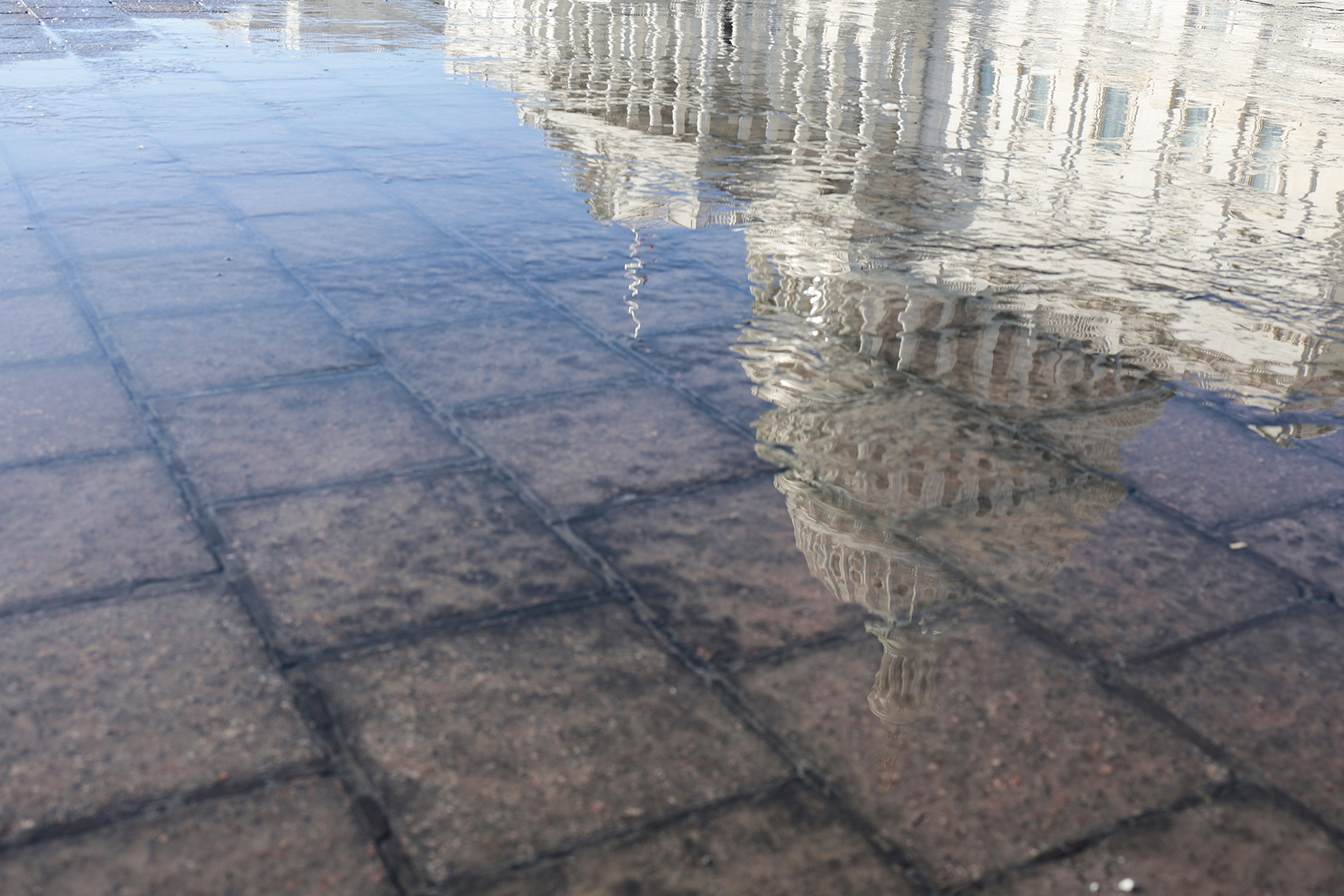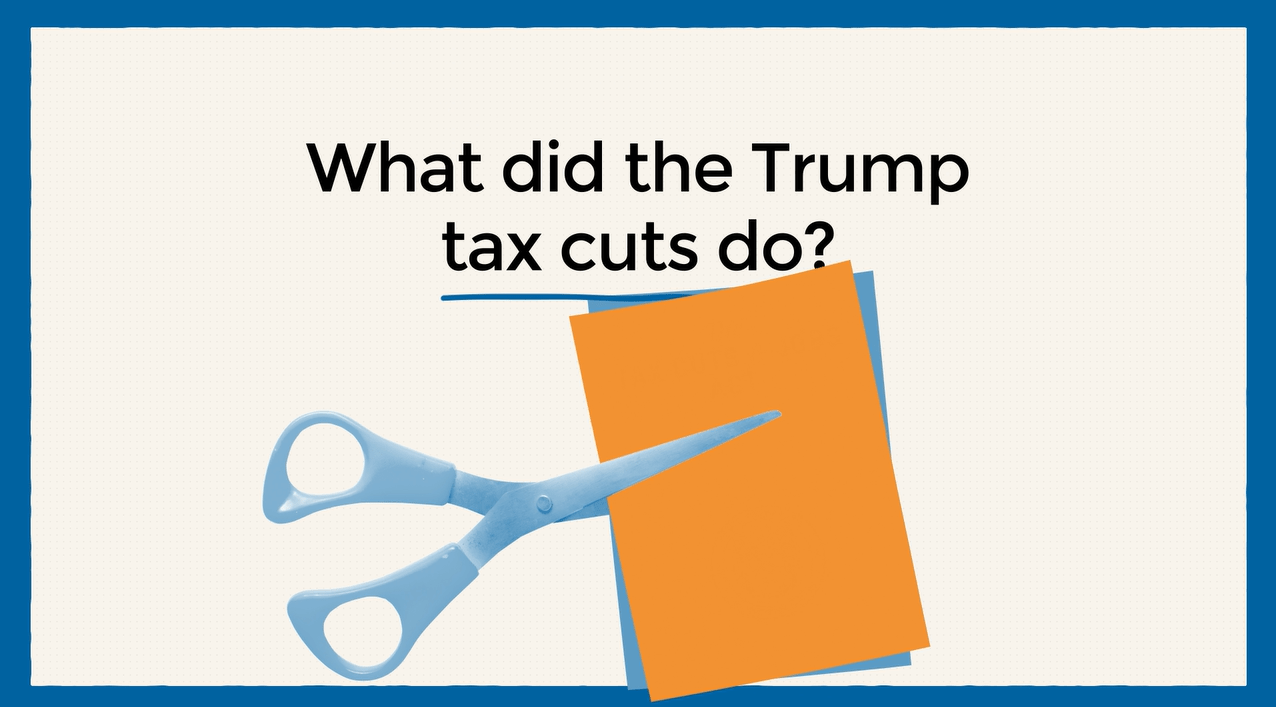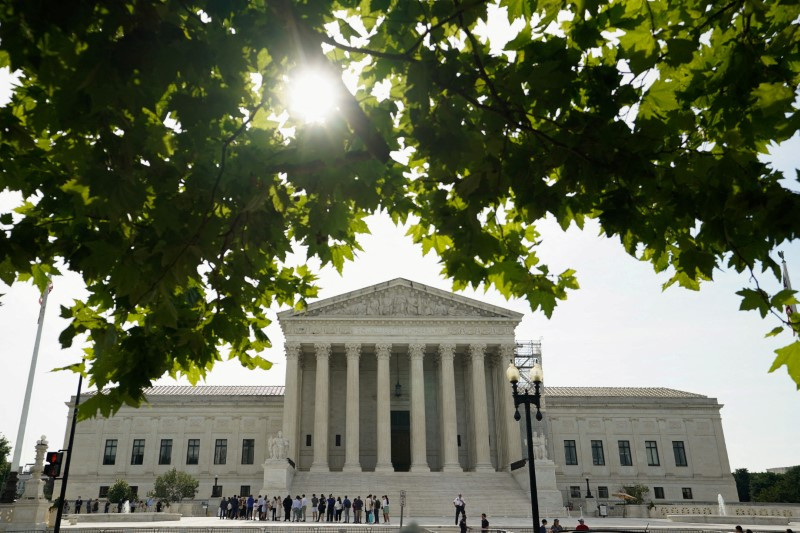US Supreme Court won't curb Biden administration social media contacts
By
Andrew Chung
June 26, 202412:21 PM EDTUpdated an hour ago
People line up to get into the U.S. Supreme Court in Washington, U.S., June 26, 2024. REUTERS/Kevin Lamarque
Purchase Licensing Rights, opens new tab
- White House welcomes ruling, written by Justice Barrett
- The challengers lacked legal standing to sue, court says
WASHINGTON, June 26 (Reuters) - The
U.S. Supreme Court declined on Wednesday to impose limits on the way President
Joe Biden's administration may communicate with social media platforms, rejecting a challenge made on free speech grounds to how officials encouraged the removal of posts deemed misinformation, including about elections and COVID.
The justices, in a 6-3 ruling, overturned a lower court's 2023 decision that various federal officials likely violated the U.S. Constitution's First Amendment, which protects against governmental abridgment of free speech, in a case brought by the states of Missouri and Louisiana as well as five individuals.
The New Orleans-based 5th U.S. Circuit Court of Appeals had issued an injunction constraining such contacts by the administration.
But conservative Justice Amy Coney Barrett, who authored the Supreme Court's ruling, wrote that the two Republican-led states and the other plaintiffs lacked the required legal standing to sue the administration in federal court.
The plaintiffs in 2022 sued officials and agencies across the federal government, including in the White House, FBI, surgeon general's office, Centers for Disease Control and Prevention and the Cybersecurity and Infrastructure Security Agency.
Barret wrote that the plaintiffs could not show a "concrete link" between the conduct by the officials and any harm that the plaintiffs suffered. They "emphasize that hearing unfettered speech on social media is critical to their work," Barrett wrote. "But they do not point to any specific instance of content moderation that caused them identifiable harm."
Conservative Justices Samuel Alito, Clarence Thomas and Neil Gorsuch dissented from the decision.
White House Press Secretary Karine Jean-Pierre welcomed the ruling, saying it helps Biden's administration "continue our important work with technology companies to protect the safety and security of the American people, after years of extreme and unfounded Republican attacks on public officials who engaged in critical work to keep Americans safe."
The plaintiffs had argued that the administration violated the rights of social media users whose posts were removed by platforms including Facebook
(META.O), opens new tab, YouTube
(GOOGL.O), opens new tab, and Twitter, now called X.
At issue was whether the administration crossed the line from mere communication and persuasion to strong arming or coercing platforms - sometimes called "jawboning" - to unlawfully censor disfavored speech, as lower courts found.
Biden's administration argued that officials sought to mitigate the hazards of online misinformation, including false information about vaccines during the pandemic that they said was causing preventable deaths, by alerting social media companies to content that violated their own policies.
"This administration engages with social media and other technology companies on critical topics, including terrorism threats, foreign malign influence campaigns, online harassment of women and children, and mental health of children and adolescents," Jean-Pierre added.
Many researchers, as well as liberals and Democrats, have warned of the dangers of social media platforms amplifying misinformation and disinformation about public health, vaccines and election fraud.
Echoing concerns raised by Republicans and various voices on the right, the plaintiffs argued that platforms, with their content-moderation practices, suppressed conservative-leaning speech. That was, the plaintiffs said, government coercion - a form of state action barred by the First Amendment.
'OPEN SEASON'
John Vecchione, a lawyer with the New Civil Liberties Alliance conservative legal group representing some of the plaintiffs, criticized the court's ruling.
"The majority of the Supreme Court has declared open season on Americans' free speech rights on the internet," Vecchione said.
Louisiana Attorney General Liz Murrill said, "A majority of the Supreme Court gives a free pass to the federal government to threaten tech platforms into censorship and suppression of speech that is indisputably protected by the First Amendment."
In a dissenting opinion, Alito said the court's majority "permits the successful campaign of coercion in this case to stand as an attractive model for future officials who want to control what the people say, hear and think."
In her opinion, Barrett faulted the evidence provided by each of the plaintiffs and said lower courts had "glossed over complexities." Barrett found that Louisiana-based U.S. District Judge Terry Doughty, who issued a preliminary
injunction in July 2023, made factual findings that "unfortunately appear to be clearly erroneous."
Doughty had concluded that the plaintiffs were likely to succeed on their claim that the government helped suppress "disfavored conservative speech" on mask-wearing, lockdowns and vaccines intended as public health measures during the pandemic, or that questioned the validity of the 2020 election in which Biden, a Democrat, defeated
Donald Trump, a Republican.
The 5th Circuit subsequently
narrowed that order, although the Supreme Court in October had put
on hold the injunction.
The Justice Department argued that government officials, including presidents, long have used the bully pulpit to express views and to inform on matters of public concern. It also said that private entities that make decisions on that information are not state actors as long as they are not threatened with adverse consequences.









